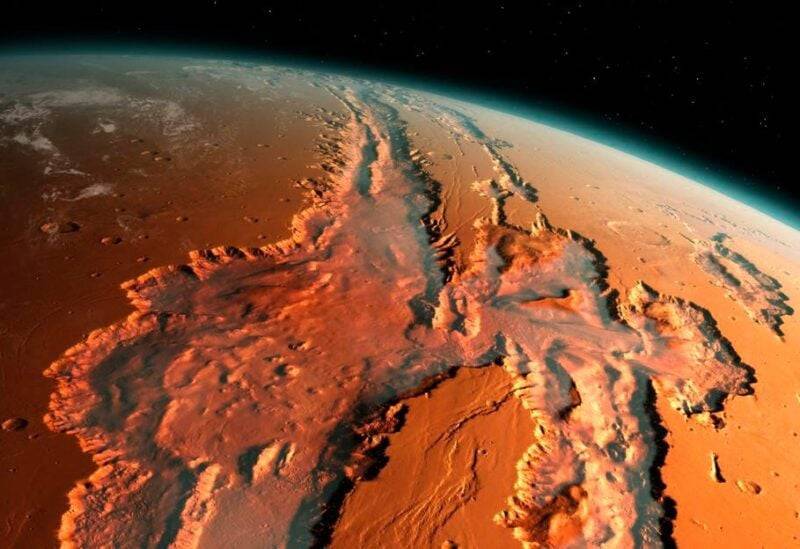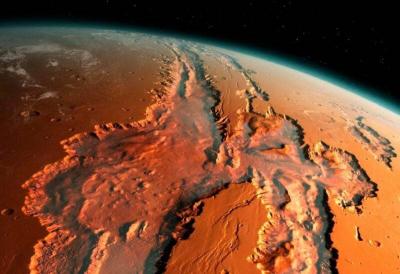Recent observations have revealed a layer of frost on the peaks of Mars' massive volcanoes in a surprising discovery that could provide a better understanding of the water cycle on the red planet, which will be useful for future exploratory missions. This discovery was made possible by images accidentally captured by the Mars Trace Gas Orbiter (TGO) from the European Space Agency over the Tharsis dome near Mars' equator, according to a study published in the journal Nature Geosciences.
This vast elevated region, measuring about 5,000 kilometers in diameter, contains enormous volcanoes that have been dormant for millions of years, including Olympus Mons, which stands 22 kilometers tall, three times the height of Mount Everest, and is the largest in the solar system. The lead author of the study related to this discovery, Edouard Valentinus, stated that no one expected to find frost in this location, as it was widely believed that this was impossible around Mars' equator.
The researcher from Brown University explained in a statement released by the European Space Agency that the strong sunlight and very low atmospheric pressure keep temperatures relatively high at the peaks and on the surface of Mars. In the Tharsis region, temperatures can drop to extremely low levels of 130 degrees below zero at night; however, this phenomenon is not due to elevation, unlike what happens on Earth, where peaks are usually frozen. Additionally, the water is very scarce in the Martian equatorial atmosphere, making condensation difficult.
Frederic Schmidt, a professor at the University of Paris-Saclay who contributed to the study, noted that delving deeper into this discovery is an important step for future human and robotic explorations. He stated, "We can extract water from the frost for human consumption and launch rockets from Mars by separating oxygen and hydrogen molecules."




